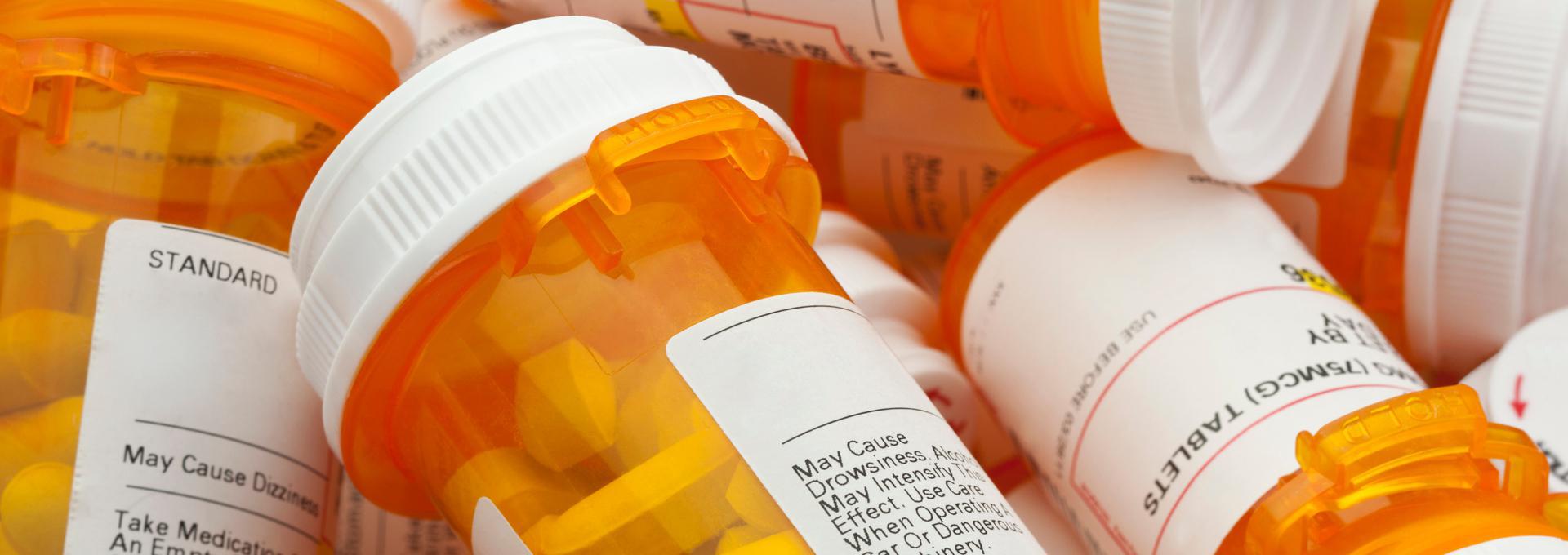
Prescription Drugs
Prescription drugs, while often providing enormous benefit to those for whom they are prescribed, are also frequently abused by those patients, or bought and sold on the street for recreational usage. Prescription drug abuse is on the rise. Prescriptions that are often used illegally include both uppers and downers. Opiate painkillers including Oxycodone, Fentanyl, and Suboxone are vastly popular and extremely addictive. Benzodiazepines like Xanax are frequently used to self-treat anxiety. Amphetamines, such as Ritalin or Adderall, are popular on campuses as students seek to gain a study advantage.
Use of prescription drugs, especially if outside the purview of a physician, can lead to addiction. Further, the effects of prescription drug abuse often escalate to other, cheaper, more dangerous drugs, as the need for a fix increases over time. Even when prescription drugs are prescribed legally, they can be easily abused. Prescription drug testing which includes examination of the levels of the drug in the body can detect usage amounts and determine if the consumption was in accordance with the prescribed amount or not.
Commonly Abused Prescription Drugs
Amphetamines are a group of synthetic stimulants that include legal prescriptions, like Adderall, and illegally manufactured methamphetamines. Prescription amphetamines typically come in pill form and are ingested orally, while methamphetamines are typically smoked. Both of these types of amphetamines can be found in a urine or hair drug test, and, if positive, the results will clearly distinguish between them.
Some street names for amphetamines may include:
Barbiturates are central nervous system depressants or "downers." They calm a person down, and sometimes make the person sleepy. Barbiturates were popular as a party drug in the 1970s, and are still legally available by prescription; however, because they are highly addictive, they are rarely prescribed any longer.
Some street names for barbiturates may include:
Benzodiazepines, commonly known by the product names of Valium, Xanax, Ativan, Klonopin, and Librium, are primarily prescribed by doctors to treat patients with anxiety, insomnia, seizures, panic attacks, and alcohol withdrawal. Additionally, this class of medicines is often used to control prolonged epileptic seizures. Other physician monitored uses include presurgical sedation and treatment of involuntary movement disorders.
While episodic and short-term use of benzodiazepines is generally safe, longer term use is discouraged. Benzodiazepines usage can lead to disorientation; driving and operating heavy machinery should be avoided when taking this medication. When mixed with alcohol, the sedative effects are dangerously enhanced.
Common street names for benzodiazepines include:
Carisoprodol (Soma) is a skeletal muscle relaxant prescribed to provide relief from injuries or discomfort to the muscle. However, this drug is sometimes abused for its sedative effects or its ability to induce feelings of giddiness.
Some street names for Soma may include:
Meprobamate is a tranquilizer that is prescribed for short-term treatment of anxiety disorders. Although embraced early on by pop culture, it is not as commonly used today. This drug is known by some of its brand names including Miltown and Mepriam.
Methadone is a controversial but legal prescription pain reliever in the opioid family. It is most often used as part of drug addiction detoxification and maintenance programs. The intended use of methadone is to counteract the effects of opiates, such as heroin or other narcotic drugs, by blocking the high that is caused by opiates at the spinal cord.
Methadone may be referred to by street names, such as:
Methaqualone (Quaaludes) is a central nervous system depressant that functions as a sedative. First introduced as a safe barbiturate-like alternative from India, methaqualone quickly caught on with recreational drug users. Quaaludes were outlawed in the United States due to widespread abuse. Methaqualone can have profound depressive effects on the central nervous system, which are intensified through the addition of alcohol and other drugs. When used in combination with other substances, the adverse affects can be enhanced and may be fatal.
Some common street names for Methaqualone may include:
Methylphenidate, commonly known by the brand name Ritalin, is a central nervous system (CNS) stimulant prescribed as a treatment for narcolepsy, for managing symptoms of ADHD, or for people who have trouble sitting still, staying quiet, or focusing. Although methylphenidate is a widely familiar drug, some of its side effects and dangers of misuse or abuse are not as well known.
Some street names for methylphenidate may include:
Propofol is a sedative-hypnotic agent typically administered by an anesthesiologist via intravenous drip. The purpose of propofol is to induce a loss of consciousness in patients undergoing surgery. Misuse or abuse of propofol can lead to serious and even fatal side effects.
"Milk of anesthesia" is one nickname for this drug due to its oily and opaque white appearance.
Propoxyphene is a narcotic cough suppressant and pain reliever that decreases discomfort and increases pain tolerance in individuals who are experiencing pain. Propoxyphene is legal in the United States and is often prescribed as an alternative to stronger pain medications such as morphine, hydroquinone, and codeine.
However, when propoxyphene is combined with other drugs like muscle relaxers or alcohol, it can have an extremely dangerous effect on the brain, sometimes resulting in coma. Propoxyphene is habit forming and highly addictive. Even when taken with a prescription, it can be extremely dangerous in a work environment that involves machinery or driving.
Zolpidem (Ambien) is a sedative-hypnotic prescribed to people with insomnia or issues with sleeping. Although it is legal to take with a prescription in the doses recommended by your doctor or pharmacist, misuse or abuse can lead to dangerous side effects.
Ambien is notorious for the unusual actions that some people take in their sleep after consuming the drug, such as driving vehicles, making phone calls, or eating.